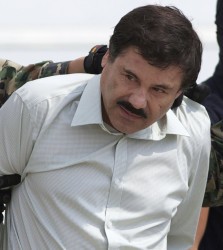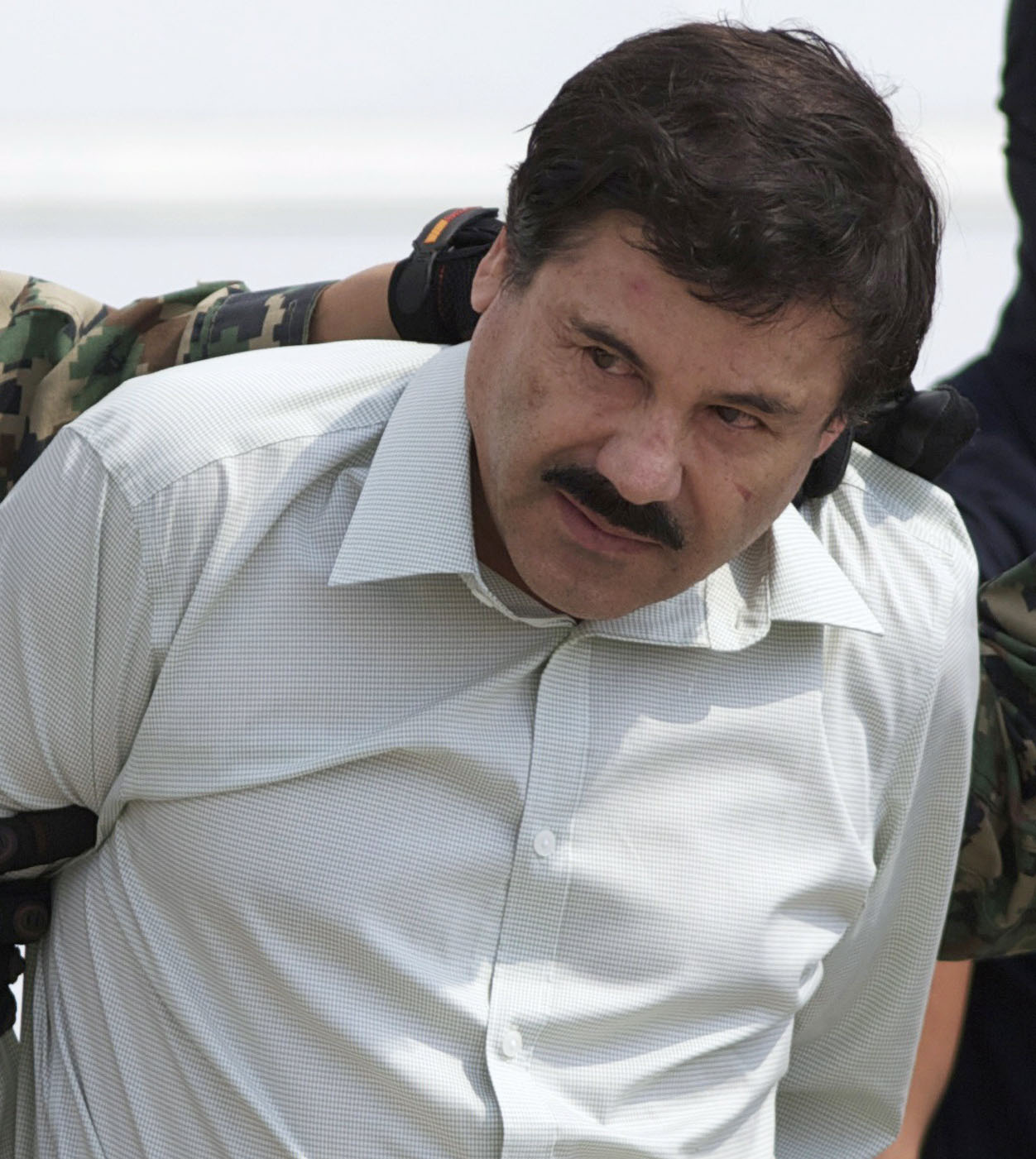ALMOLOYA DE JUAREZ, Mexico, (Reuters) – Mexico’s most notorious drug lord, Joaquin “El Chapo” Guzman, broke out of a high-security prison on Saturday night for the second time, escaping in a tunnel built right under his cell, and heaping embarrassment on President Enrique Pena Nieto.

The kingpin snuck out of the prison through a subterranean tunnel more than 1.5 km (1 mile) long that ended at an abandoned property near the local town, National Security Commissioner Monte Alejandro Rubido told a news conference yesterday.
Guzman, who had bribed his way out of prison during an escape in 2001, was seen on video entering his shower area at 8:52 p.m. on Saturday (0152 GMT yesterday), then disappeared, the National Security Commission (CNS) said.
Wanted by U.S. prosecutors and once featured in the Forbes list of billionaires, Guzman was gone by the time guards entered his cell in Altiplano prison in central Mexico, the CNS said.
“This is going to be a massive black eye for Pena Nieto’s administration,” said Mike Vigil, former head of global operations for the U.S. Drug Enforcement Administration.
“I don’t think they took into account the cunning of Chapo Guzman and the unlimited resources he has. If Chapo Guzman is able to make it back to the mountainous terrain that he knows so well in the state of Sinaloa … he may never be captured again.”
Beneath a 50-cm (20 inch) by 50-cm hole in the cell’s shower area, guards found a ladder descending some 10 meters (32 feet) into the tunnel, which was about 1.7 meters (5.6 feet) high and 70-80 centimeters (28-31 inches) wide.
Prison workers were quickly detained over the escape.
Rubido said 18 officials from the penitentiary were being interrogated at the unit specializing in organized crime at the Attorney General’s office.
Outside the Altiplano lockup, and at the deserted property where Guzman surfaced, security forces barred reporters, while guards arrived for the day shift and encountered a prison in lockdown, wondering whether to stay or go home.
After the launch of a massive manhunt for Guzman, Pena Nieto ordered an investigation into whether public officials had helped the capo escape.
“There’s no doubt this is an affront to the Mexican state, but I have confidence that the institutions … can recapture this criminal,” he said in a statement from Paris.
Guzman was one of the world’s top crime bosses, running the powerful Sinaloa Cartel, which has smuggled billions of dollars worth of cocaine, marijuana and methamphetamines into the United States and fought vicious turf wars with other Mexican gangs.
The flight of Guzman, who became a legendary figure in villages scattered in the sierra where he grew up in northwestern Mexico, seriously undermines Pena Nieto’s pledge to bring order to a country racked by years of gang violence.
U.S. Attorney General Loretta Lynch, noting Guzman faces multiple drug-running and organized crime charges in the United States, said Washington shared Mexico’s concern over the escape.
“The U.S. government stands ready to work with our Mexican partners to provide any assistance that may help support his swift recapture,” she said in a statement.
The breakout happened in the State of Mexico, the home state of Pena Nieto, who took office in 2012 vowing to confront cartel violence that has killed more than 100,000 people since 2007.
‘WORSE THAN DEPLORABLE, UNFORGIVABLE’
The Mexican president has come under increasing pressure to deliver on his pledges to root out corruption after becoming embroiled in a string of conflict-of-interest scandals. He was en route to France when news of Guzman’s getaway broke.
Before Pena Nieto won election, politicians in his Institutional Revolutionary Party (PRI) had mocked their conservative rivals for letting Guzman escape while they ran the country, saying it would not have happened on their watch.
Days after Guzman was captured in 2014, Pena Nieto said another El Chapo escape must “never happen again.”
“Given what happened in the past, truly, it would be worse than deplorable, it would unforgivable,” he said then.
Inside the passageway used for Guzman’s latest escape, guards found a motorbike mounted on rails, probably used to cart away soil, security official Rubido said, as well as equipment to put air into the tunnel.
Over the past decade, dozens of illegal tunnels built by gangs trafficking drugs and people across the U.S.-Mexican border have cropped up, with well over 100 found since 2007.
But penetrating Mexico’s highest security prison to spring the world’s most infamous drug smuggler undoubtedly represents a more audacious challenge, experts said.
Rubido did not comment on why authorities had apparently failed to notice a long tunnel being built under the prison.
The capo’s escape could also strain relations with the United States, which wanted him extradited, said Alberto Islas, a security expert at consultancy Risk Evaluation.
“They were concerned about how dangerous he was, and they had a lack of confidence in the Mexican authorities to stop him operating from jail,” he added.
In 2001, Guzman paid guards to help him slip out of the high-security Puente Grande prison near the city of Guadalajara after a previous arrest in 1993. After eluding capture for 13 years, Guzman was arrested in February 2014 in his home state of Sinaloa.
Government officials vowed yesterday that Guzman would be recaptured, and security forces fanned out to search roads near the prison, which is some 90 km (60 miles) west of the capital.

